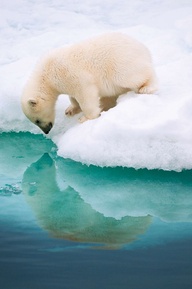The Endangered Animals of Finding Nemo: Seahorses

Did you know that 1 out of 6 animals featured in Finding Nemo is endangered? Here’s one:
Hi, I’m Sheldon, the seahorse from Finding Nemo. Ahchoo! The following are characteristics I share with all other seahorses; some of them are unique only to seahorses!
1. Males get pregnant and give birth (the eggs are from mom though!)
2. Seahorses are fish, even though they have a unique body shape
3. Seahorses have no stomach so they must eat constantly
4. Seahorses have prehensile tails (like a monkey) to grab onto things (and keep us from drifting away in the current!)
5. Seahorses have bony plates all over their body for protection
6. Seahorses can change color to match their surroundings
7. There are 47 known species of seahorses
8. The largest seahorse is the Pot-bellied Seahorse at almost 14 inches (35 cm) long
9. The smallest seahorse is the Pygmy Seahorse at less than an inch (2 cm) long
10. Over 20 million seahorses are caught and sold a year
Many species of seahorses are threatened or endangered with extinction. Seahorses are caught and dried for use in Traditional Chinese Medicine, and sold as souvenirs. Live seahorses are caught for the aquarium trade.
Seahorses are also caught as by-catch in fishing nets. Seahorses are also threatened by habitat destruction. Even deforestation on land can cause silt (fine dirt) to flow onto the seagrass and coral reef areas where many seahorses live. Pollution can affect all habitats that seahorses live in, including coral reefs, seagrass areas, mangroves, and estuaries.
You can help seahorses by:
1. not buying seahorses live or dead
2. supporting marine protected areas (like national parks for the ocean)
3. reduce the pollution flowing into the ocean (remember Gill said to Nemo, “All drains lead to the ocean, kid?”)
4. support forest conservation along the coastlines where seahorses live.
Visit Project Seahorse




